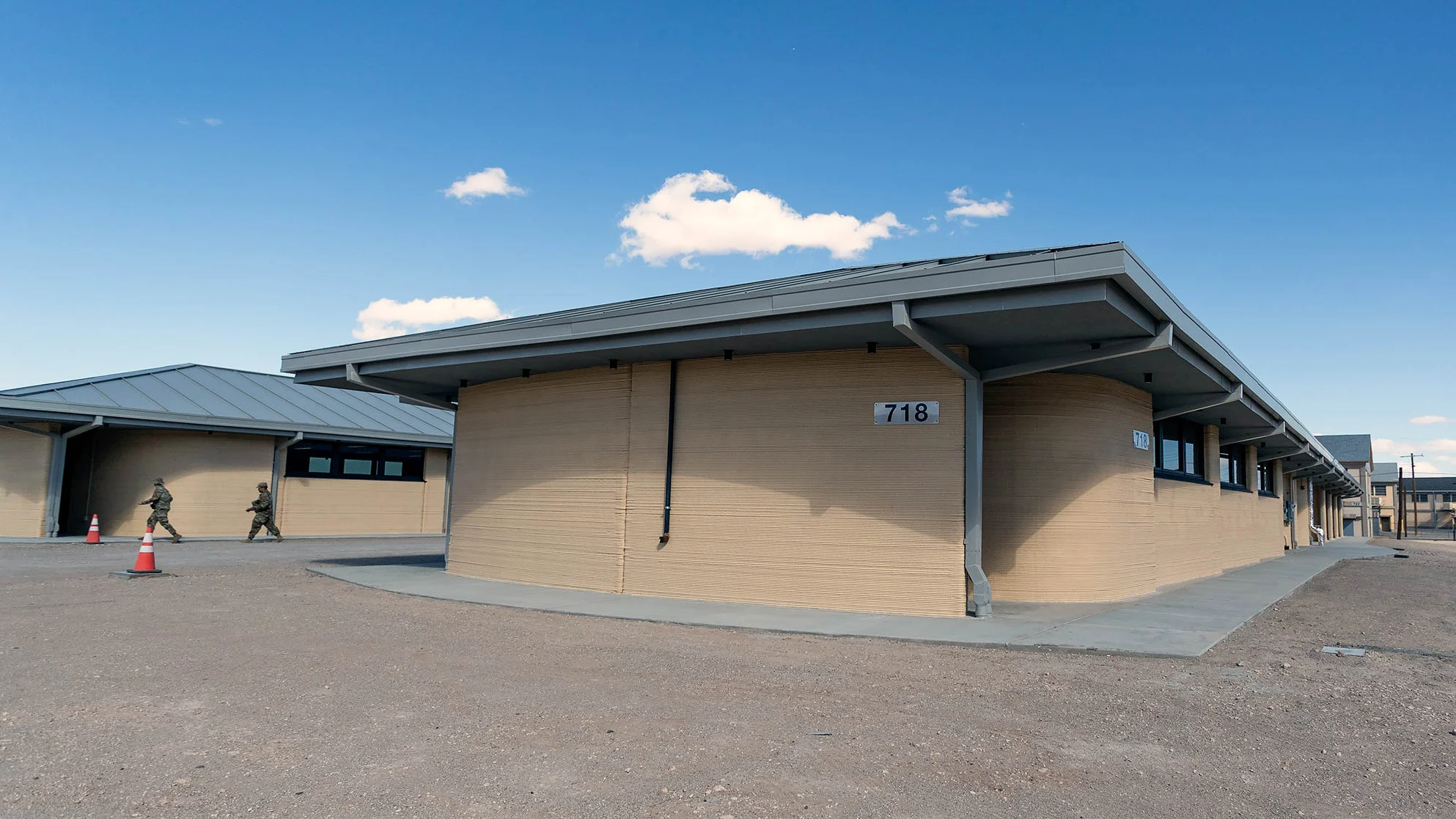Fort Bliss, Texas, ahora alberga el primer cuartel impreso en 3D del Departamento de Defensa. “Estamos aquí hoy porque mucha gente soñó con nuevas ideas y se preguntó: ‘¿Por qué no?’. Por eso entregamos hoy esta instalación de vanguardia al Ejército”, declaró el teniente general David Wilson, subjefe de Estado Mayor de Instalaciones del Ejército (G-9), durante la ceremonia de inauguración el 29 de enero. El nuevo cuartel fue una colaboración entre el Ejército y la empresa emergente de robótica y materiales avanzados ICON, con sede en Texas.
Fort Bliss, Texas, is now home to the Department of Defense’s first 3D-printed barracks.
“We’re here today because many people dreamed of new ideas and said, ‘Why not?’ and that’s why we’re delivering this state-of-the-art facility to the Army today,” Lt. Gen. David Wilson, the Army’s deputy chief of staff of installations, G-9, said during the Jan. 29 ribbon-cutting ceremony.
The new barracks was a collaboration between the Army and Texas-based robotics and advanced materials startup ICON. It feature three buildings across two new sites, and each building is 5,700 square feet, according to an Army news release. Two buildings are in the Pershing Heights area, and one is at Camp McGregor on the Fort Bliss Training Complex in New Mexico.
Wilson, who served with the 1st Armored Division at Fort Bliss from 2008 to 2010 as the 121st Brigade Support Battalion commander after the division headquarters moved to El Paso, Texas, from Ansbach, Germany, called the area “one of the warmest and most welcoming communities I had ever been a part of in my 38 years of service, both as an enlisted soldier and a commissioned officer.”
The 3D-printed facilities initially will house troops deploying to Fort Bliss in support of the installation’s Mobilization Force Generation Installation mission. Each of the barracks buildings can house up to 56 soldiers, according to the Army news release.
Mobilization Force Generation Installations are installations that support units as they prepare to deploy and after they return from their mobilization. Fort Bliss processes and trains about 70,000 service members annually, with support from Army Reserve and National Guard units that deploy to Fort Bliss for annual rotations, according to the Army news release.
The 3D-printed barracks program is part of the Army’s larger efforts to improve soldiers’ quality of life. The Army also has invested in family and privatized housing across 50 Army installations, refined its hiring at child development centers and increased bonuses, among other initiatives.
To develop the barracks at Fort Bliss, the facility was designed using computer-aided design software before it was virtually sliced and rejoined. After that, the barracks were built with a 3D printer using a concrete material that can be tailored to local environmental conditions, according to the Army news release.
The new barracks embrace the “spirit of evolution” at Fort Bliss, Wilson said.
“Fort Bliss is not only a military installation; it’s a cornerstone of our nation’s defense and a symbol of resilience, strength, and enduring commitment to our nation—a place of growth and transformation,” he said. “This post has evolved with the times, embracing new technologies, new strategies, and new ways of serving our country. So, it’s fitting that we gather here today to open new barracks that embody the same spirit of evolution and progress.”
Fuente: https://www.ausa.org


